Design and Numerical Simulation-Based Optimization of a Novel Flat-Face Coupling System for Hydraulic Power Equipment
Abstract
1. Introduction
2. Mechanism Design and Kinetics
3. Valve Opening Characteristics
3.1. Investigation Methods and Boundary Conditions
3.2. Results and Discussion
4. Flow Characteristics and Optimization of the Coupler
4.1. Investigation Methods and Boundary Conditions
4.2. Results and Discussion
5. Conclusions
Author Contributions
Funding
Institutional Review Board Statement
Informed Consent Statement
Data Availability Statement
Conflicts of Interest
References
- Liu, C.; Hu, M.; Gao, W.; Chen, J.; Zeng, Y.; Wei, D.; Yang, Q.; Bao, G. A high-precise model for the hydraulic power take-off of a raft-type wave energy converter. Energy 2021, 215, 119107. [Google Scholar] [CrossRef]
- Mizukami, H.; Otani, T.; Shimizu, J.; Hashimoto, K.; Sakaguchi, M.; Kawakami, Y.; Lim, H.; Takanishi, A. Investigation of Parallel Connection Circuit by Hydraulic Direct-Drive System for Biped Humanoid Robot Focusing on Human Running Motion. CISM Int. Cent. Mech. Sci. Courses Lect. 2021, 601, 34–42. [Google Scholar] [CrossRef]
- Ma, K.; Sun, D.; Sun, G.; Kan, Y.; Shi, J. Design and efficiency analysis of wet dual clutch transmission decentralised pump-controlled hydraulic system. Mech. Mach. Theory 2020, 154, 104003. [Google Scholar] [CrossRef]
- Kan, Y.; Sun, D.; Luo, Y.; Qin, D.; Shi, J.; Ma, K. Optimal design of the gear ratio of a power reflux hydraulic transmission system based on data mining. Mech. Mach. Theory 2019, 142, 103600. [Google Scholar] [CrossRef]
- Ma, B.; Yu, L.; Chen, M.; Li, H.Y.; Zheng, L.J. Numerical and experimental studies on the thermal characteristics of the clutch hydraulic system with provision for oil flow. Ind. Lubr. Tribol. 2019, 71, 733–740. [Google Scholar] [CrossRef]
- Lu, X.; Hu, C.; Chai, Y.; Ma, W. Experiment of transient flow field of hydrodynamic coupling under dynamic speed regulation with PIV. Huazhong Keji Daxue Xuebao (Ziran Kexue Ban) J. Huazhong Univ. Sci. Technol. (Nat. Sci. Ed.) 2019, 47, 50–54. [Google Scholar]
- Wang, J.; Zhao, J.; Li, W.; Jia, X.; Wei, P. Research and Improvement of the Hydraulic Suspension System for a Heavy Hydraulic Transport Vehicle. Appl. Sci. 2020, 10, 5220. [Google Scholar] [CrossRef]
- Truong, A.; An, T.; Ahn, K.K. Safety Operation of n-DOF Serial Hydraulic Manipulator in Constrained Motion with Consideration of Contact-Loss Fault. Appl. Sci. 2020, 10, 8107. [Google Scholar] [CrossRef]
- Sakaino, S.; Tsuji, T. Oil leakage and friction compensation for electro-hydrostatic actuator using drive-side and load-side encoders. In Proceedings of the IECON 2016—42nd Annual Conference of the IEEE Industrial Electronics Society, Florence, Italy, 23–26 October 2016; pp. 5088–5093. [Google Scholar]
- Rinneberg, S.; Teizer, J.; Kessler, S.; Günthner, W.A. Smart quick coupling system for safe equipment attachment selection and operation. In Proceedings of the 32nd International Symposium on Automation and Robotics in Construction, Oulu, Finland, 15–18 June 2015. [Google Scholar]
- Wang, W.; Zhang, S.; Mei, X.; Song, Y.; Zhang, H. Research on the quick coupler mechanism of near-pig receiver and launcher. In Proceedings of the International Conference on Pipelines and Trenchless Technology, Xi’an, China, 16–18 October 2013; pp. 1217–1225. [Google Scholar]
- Tang, Z.; Yun, C. Quick action coupling technology in full-automatic quick coupling device: A review. Zhejiang Daxue Xuebao (Gongxue Ban) J. Zhejiang Univ. (Eng. Sci.) 2017, 51, 461–470. [Google Scholar]
- Śliwiński, P. New Satellite Pumps. Key Eng. Mater. 2011, 490, 195–205. [Google Scholar] [CrossRef]
- Śliwiński, P. Influence of Water and Mineral Oil on the Leaks in Satellite Motor Commutation Unit Clearances. Pol. Marit. Res. 2017, 24, 58–67. [Google Scholar] [CrossRef]
- ISO. ISO Copyright Office Hydraulic Fluid Power—Dimensions and Requirements for Screw-to-Connect Quick-Action Couplings for Use at a Pressure of 72 MPa (720 bar); ISO 14540; International Organization for Standardization: Geneva, Switzerland, 2013. [Google Scholar]
- ISO. ISO Copyright Office Hydraulic Fluid Power—Quick-Action Couplings—Part 1: Dimensions and Requirements, IDT; ISO 7241; International Organization for Standardization: Geneva, Switzerland, 2014. [Google Scholar]
- ISO. ISO Copyright Office Hydraulic Fluid Power—Flush-Face Type, Quick-Action Couplings for Use at Pressures of 20MPa (200 bar) to 31.5 MPa (315 bar)—Specifications—AMENDMET1; ISO 16028; International Organization for Standardization: Geneva, Switzerland, 1999. [Google Scholar]
- Kanon, R.B. Increasing safety and efficiency. Hydrocarb. Eng. 2011, 16, 103–107. [Google Scholar]
- Sebastian, R.; Satheesh Kumar, S. Design of Quick Connect-Disconnect Hydraulic Coupling. Int. J. Recent Adv. Mech. Eng. 2014, 3, 43–54. [Google Scholar] [CrossRef]
- Strmčnik, E.; Majdič, F. Comparison of leakage level in water and oil hydraulics. Adv. Mech. Eng. 2017, 9, 1687814017737723. [Google Scholar] [CrossRef]
- Pezdirnik, J. Fluid flow through gaps in hydraulic components-(Liquid flow through gaps between paralell surfaces without relative velocity). Stroj. Vestn. 2001, 47, 210–216. [Google Scholar]
- Chen, J.; Wang, B.; Liu, D.; Yang, K. Study on the Dynamic Characteristics of a Hydraulic Continuous Variable Compression Ratio System. Appl. Sci. 2019, 9, 4484. [Google Scholar] [CrossRef]
- Ferras, D.; Manso, P.; Schleiss, A.; Covas, D. One-Dimensional Fluid–Structure Interaction Models in Pressurized Fluid-Filled Pipes: A Review. Appl. Sci. 2018, 8, 1844. [Google Scholar] [CrossRef]
- Amirante, R.; Vescovo, G.D.; Lippolis, A. Flow forces analysis of an open center hydraulic directional control valve sliding spool. Energy Convers. Manag. 2006, 47, 114–131. [Google Scholar] [CrossRef]
- Selvam, R.; Loganathan, G.B. Product detail and analysis of hydraulic quick releasing coupling. Mater. Today Proc. 2020, 22, 751–755. [Google Scholar] [CrossRef]
- Qin, Z.; Wu, Y.T.; Lyu, S.K. A Review of Recent Advances in Design Optimization of Gearbox. Int. J. Precis. Eng. Manuf. 2018, 19, 1753–1762. [Google Scholar] [CrossRef]
- Qin, Z.; Wu, Y.T.; Eizad, A.; Jeon, N.S.; Kim, D.S.; Lyu, S.K. A Study on Simulation Based Validation of Optimized Design of High Precision Rotating Unit for Processing Machinery. Int. J. Precis. Eng. Manuf. 2019, 20, 1601–1609. [Google Scholar] [CrossRef]
- Qin, Z.; Wu, Y.T.; Eizad, A.; Lee, K.H.; Lyu, S.K. Design and evaluation of two-stage planetary gearbox for special-purpose industrial machinery. J. Mech. Sci. Technol. 2019, 33, 5943–5950. [Google Scholar] [CrossRef]
- Qin, Z.; Son, H.I.; Lyu, S.K. Design of anti-vibration mounting for 140A class alternator for vehicles. J. Mech. Sci. Technol. 2018, 32, 5233–5239. [Google Scholar] [CrossRef]
- Qin, Z.; Zhang, Q.; Wu, Y.T.; Eizad, A.; Lyu, S.K. Experimentally Validated Geometry Modification Simulation for Improving Noise Performance of CVT Gearbox for Vehicles. Int. J. Precis. Eng. Manuf. 2019, 20, 1969–1977. [Google Scholar] [CrossRef]
- Qin, Z.; Wu, Y.; Huang, A.; Lyu, S.; Sutherland, J. Theoretical Design of a Novel Vibration Energy Absorbing Mechanism for Cables. Appl. Sci. 2020, 10, 5309. [Google Scholar] [CrossRef]
- Wang, H.; Zhao, Y.; Wang, J.; Kong, X.; Liu, H.; Li, K.; Wang, X. Numerical simulation of flow characteristics for a labyrinth passage in a pressure valve. J. Hydrodyn. Ser. B 2016, 28, 629–636. [Google Scholar] [CrossRef]
- Li, W.; Gao, Z.; Jin, Z.; Qian, J. Transient Study of Flow and Cavitation Inside a Bileaflet Mechanical Heart Valve. Appl. Sci. 2020, 10, 2548. [Google Scholar] [CrossRef]
- Li, J.; Gao, Z.; Wu, H.; Jin, Z. Numerical Investigation of Methodologies for Cavitation Suppression Inside Globe Valves. Appl. Sci. 2020, 10, 5541. [Google Scholar] [CrossRef]
- Fasquelle, A.; Pellé, J.; Harmand, S.; Shevchuk, I.V. Numerical Study of Convective Heat Transfer Enhancement in a Pipe Rotating Around a Parallel Axis. J. Heat Transf. 2014, 136, 051901. [Google Scholar] [CrossRef]
- Riemslagh, K.; Vierendeels, J.; Dick, E. Simulation of Incompressible Flow in Moving Geometries; Von Karman Institute for Fluid Dynamics: Sint-Genesius-Rode, Belgium, 1998; 24p. [Google Scholar]
- Menéndez Blanco, A.; Fernández Oro, J.M. Unsteady numerical simulation of an air-operated piston pump for lubricating greases using dynamic meshes. Comput. Fluids 2012, 57, 138–150. [Google Scholar] [CrossRef]
- Siddique, W.; El-Gabry, L.; Shevchuk, I.V.; Fransson, T.H. Validation and Analysis of Numerical Results for a Two-Pass Trapezoidal Channel With Different Cooling Configurations of Trailing Edge. J. Turbomach. 2013, 135, 110271–110278. [Google Scholar] [CrossRef] [PubMed]
- Li, S.; Yang, J. Effects of Inclination Angles on Stepped Chute Flows. Appl. Sci. 2020, 10, 6202. [Google Scholar] [CrossRef]
- Zore, K.; Caridi, D.; Lockley, I. Fast and Accurate Prediction of Vehicle Aerodynamics Using Ansys Mosaic Mesh. SAE Tech. Pap. 2020, 1, 5011. [Google Scholar] [CrossRef]
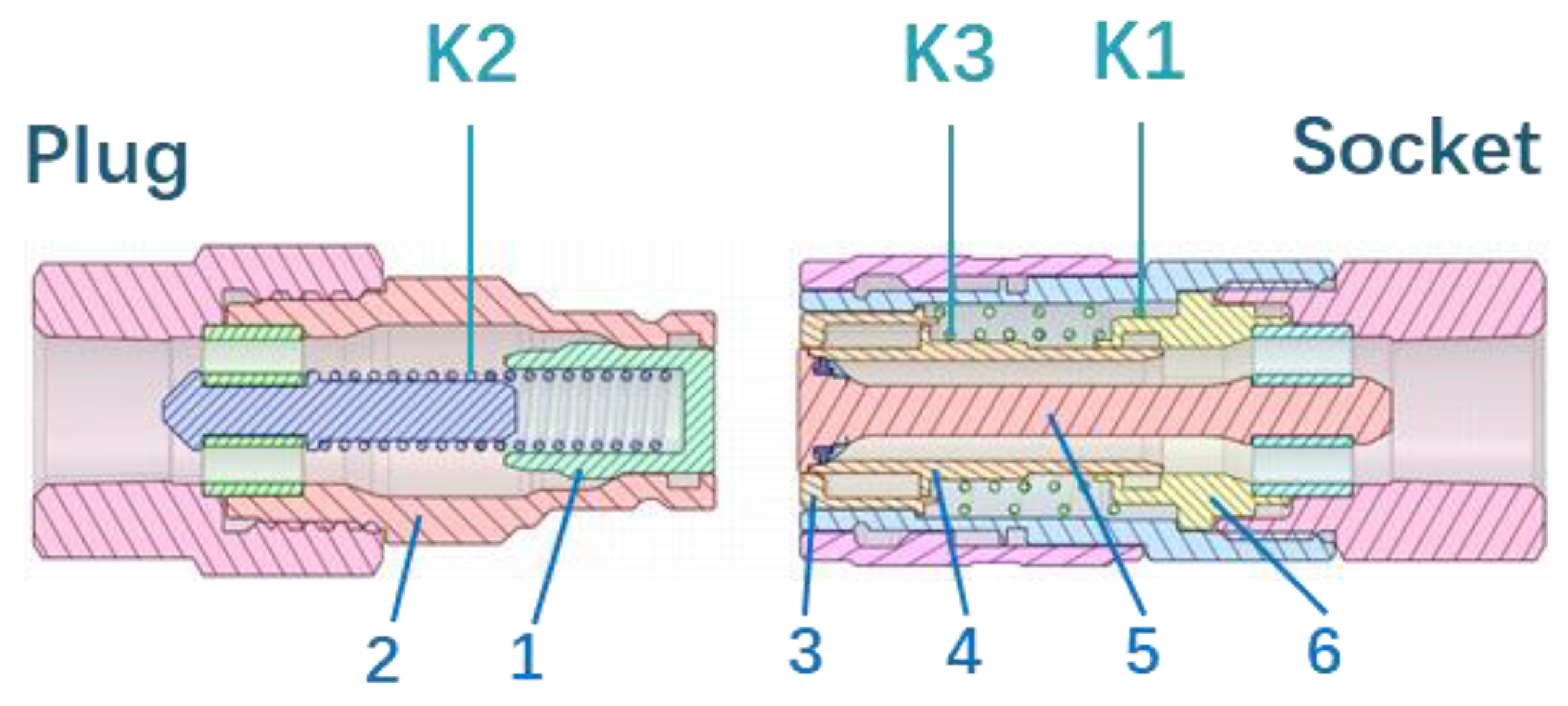
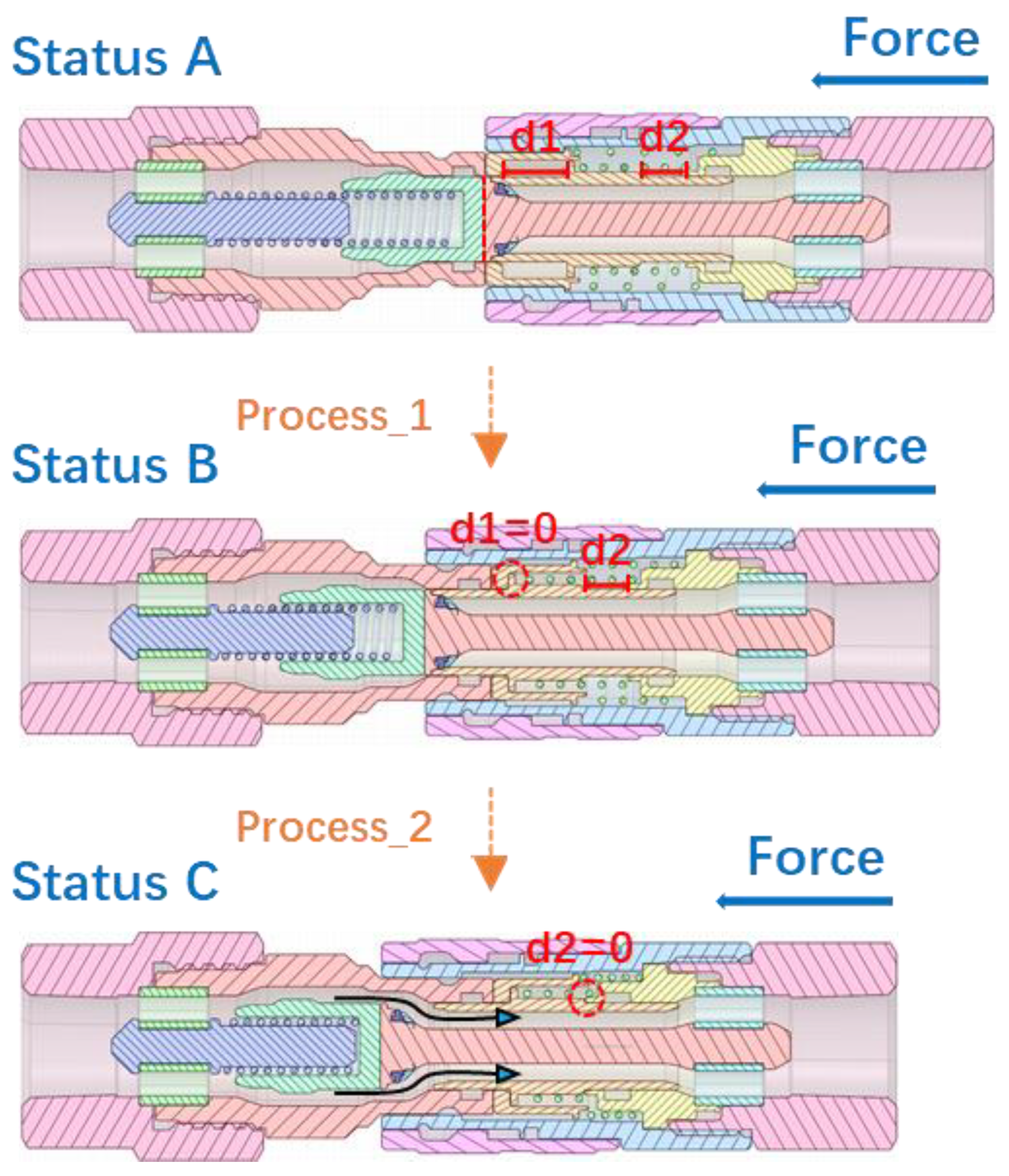

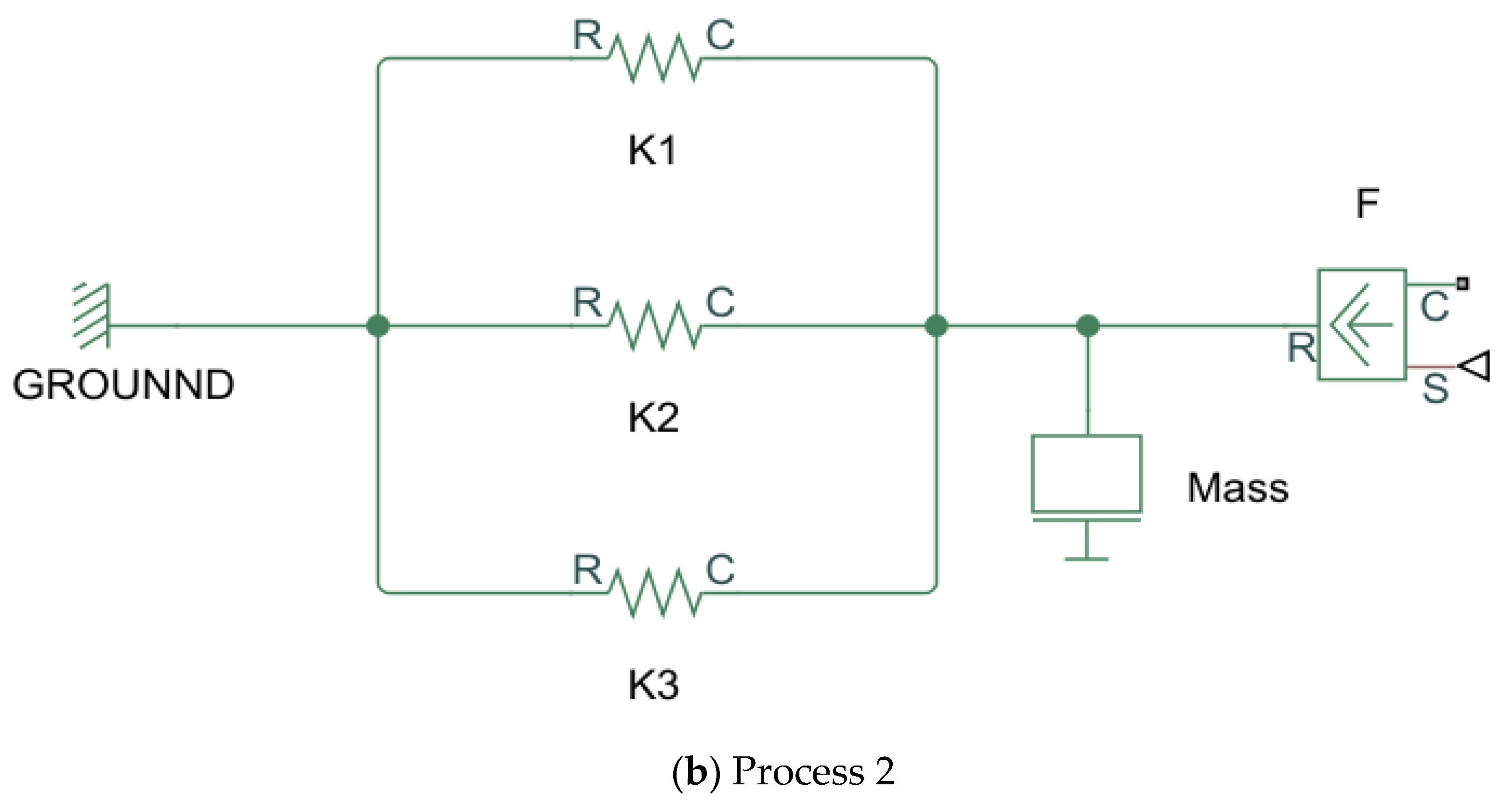
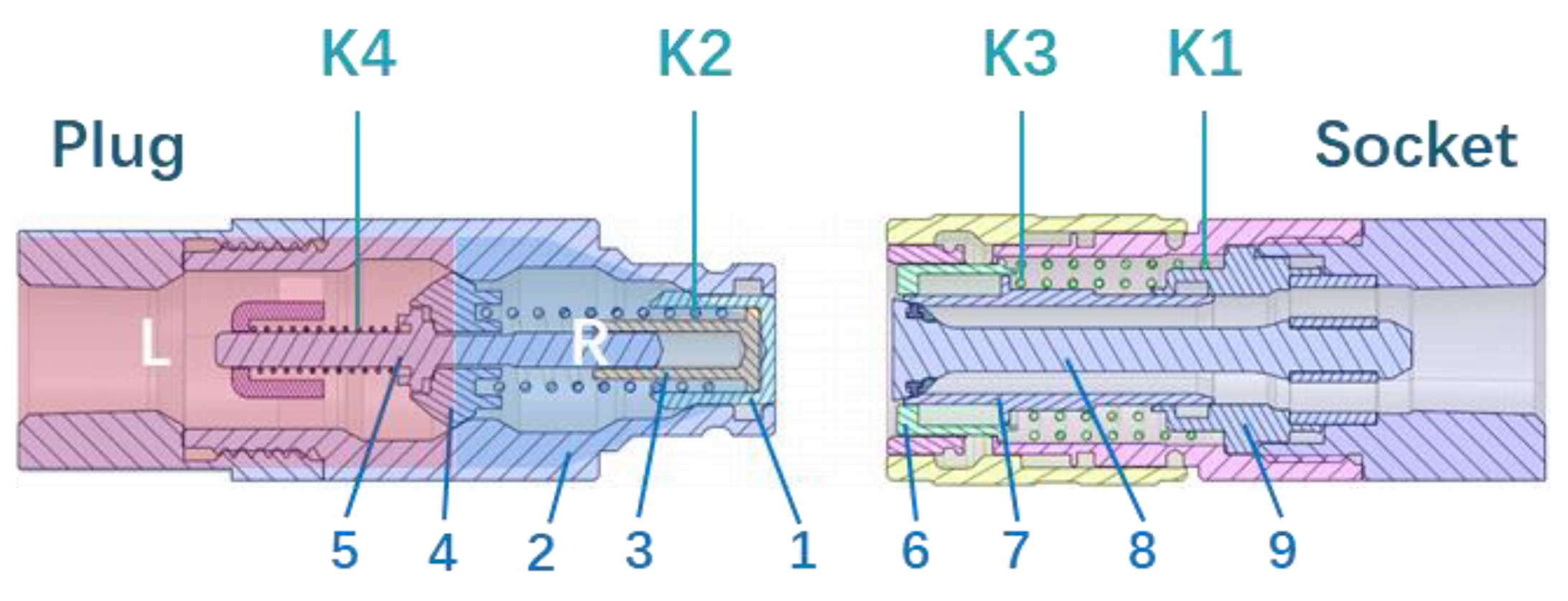
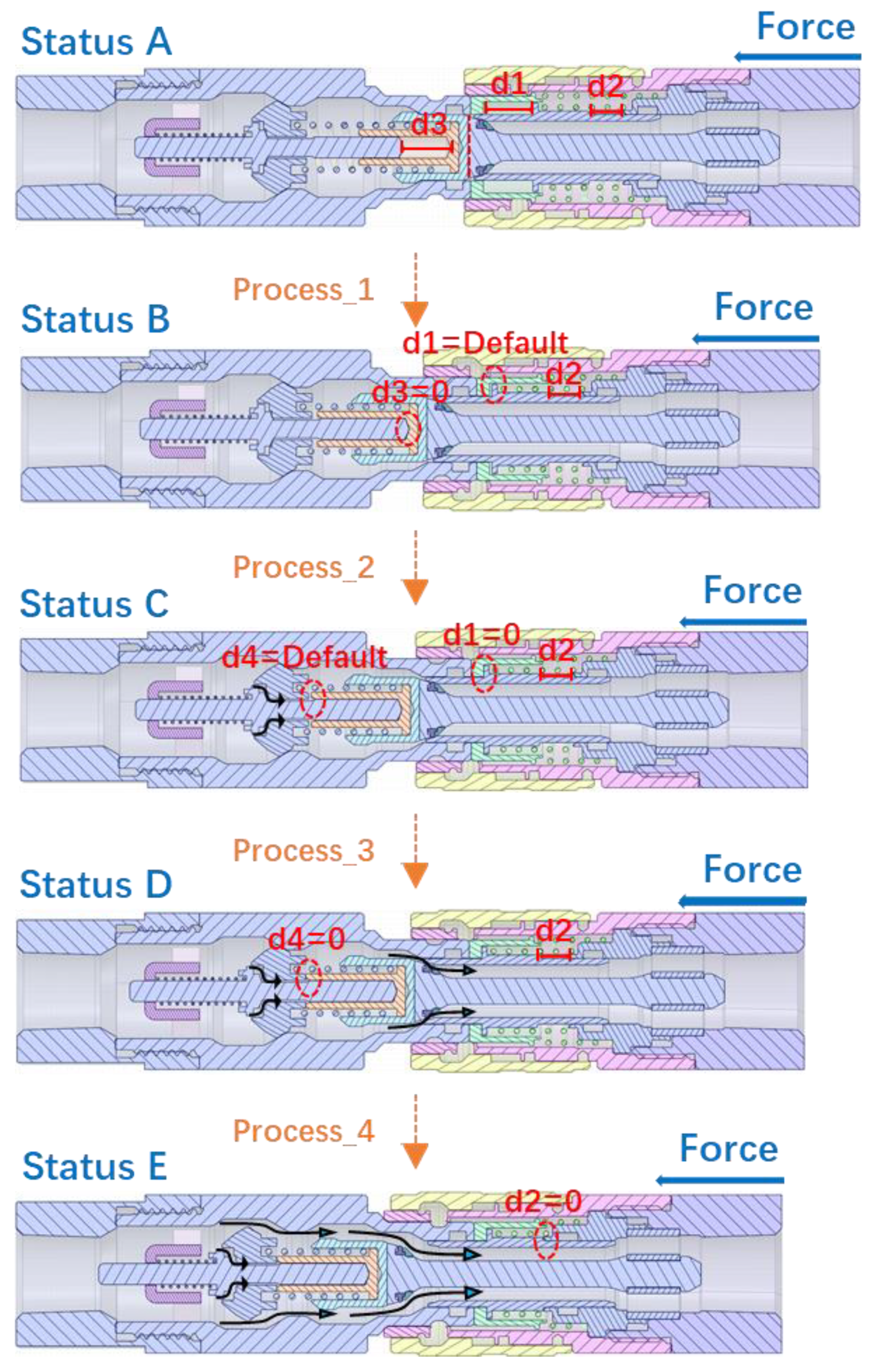
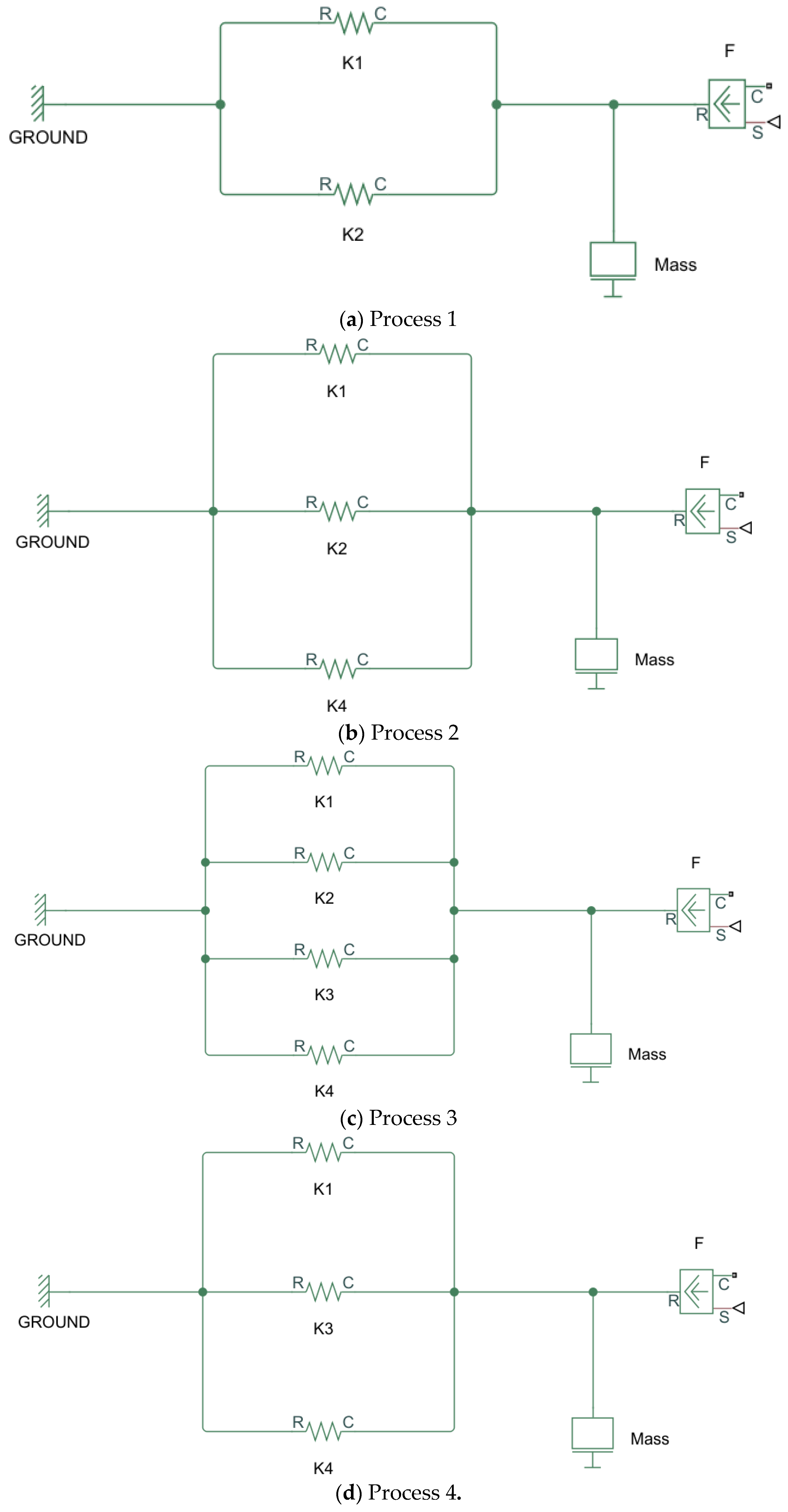





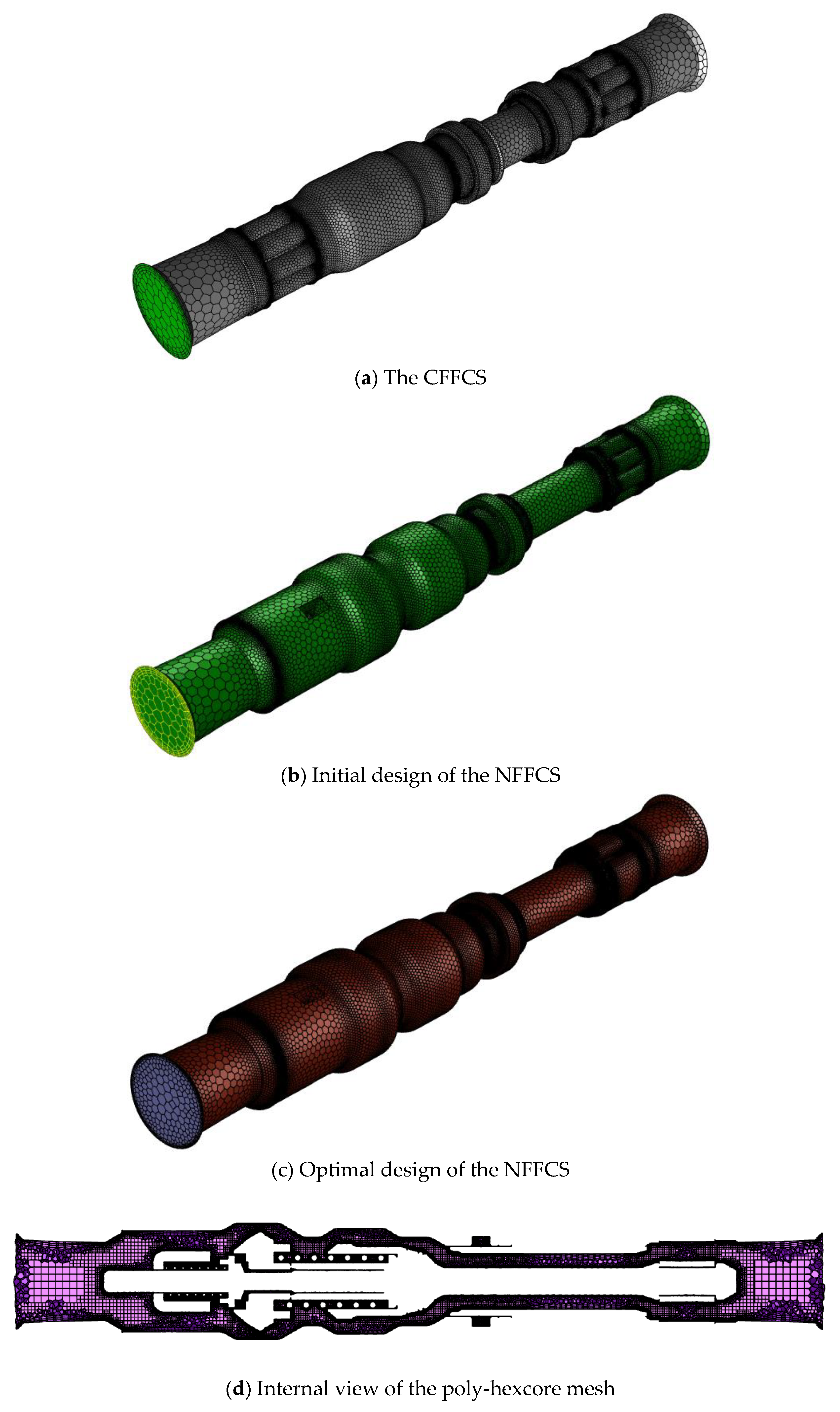
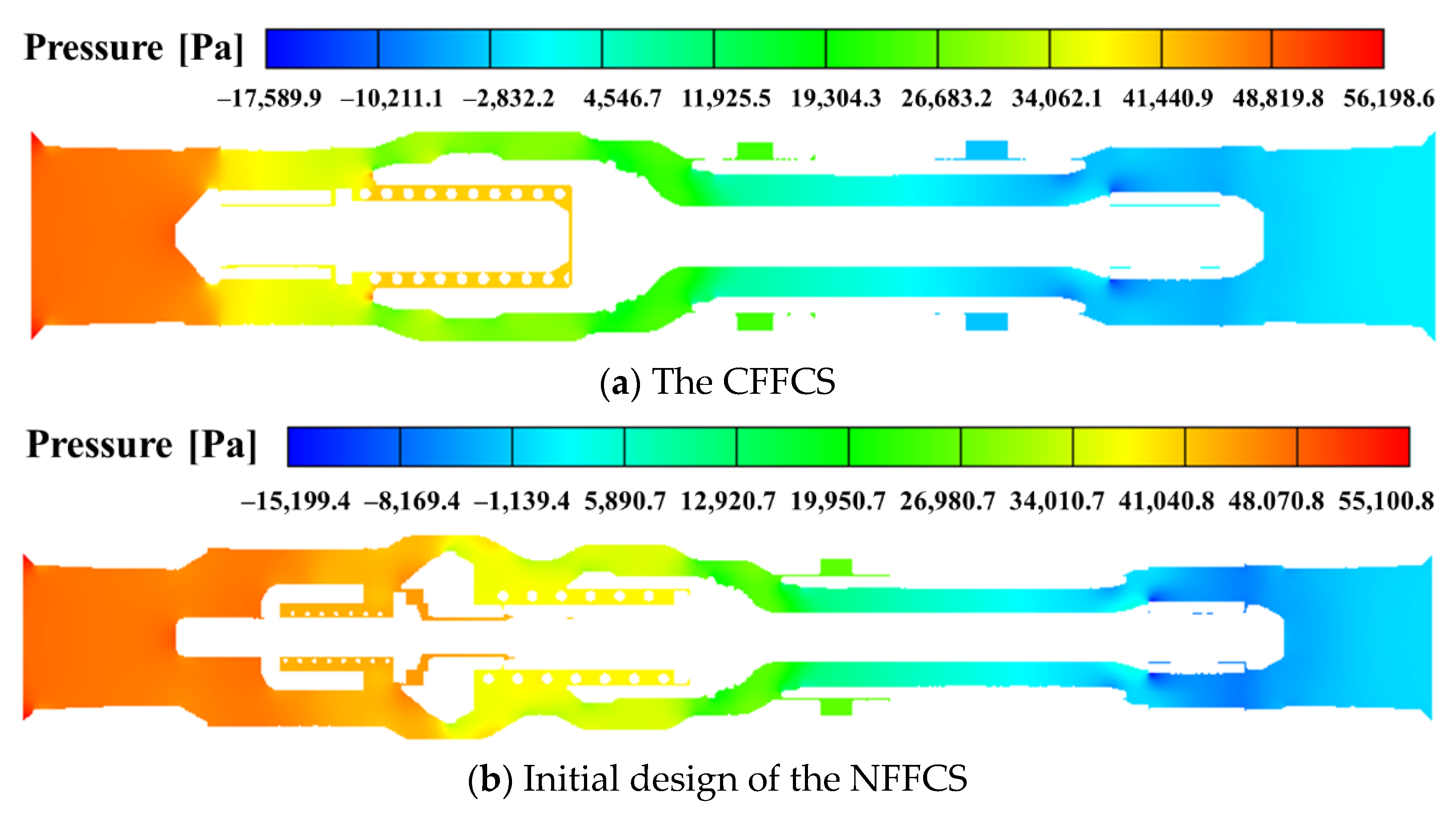



| Position | Initial Design | Optimized Design |
|---|---|---|
| 1 |  | 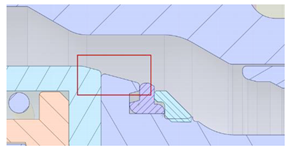 |
| 2 | 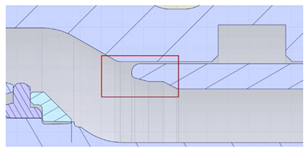 | 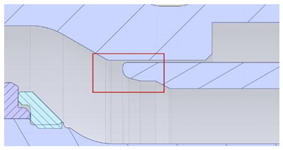 |
| 3 | 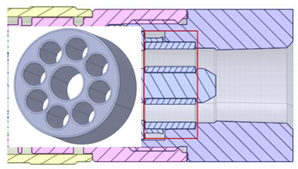 | 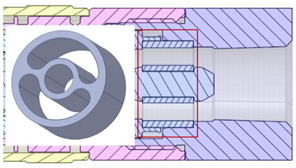 |
| Position | Initial Design | Optimized Design |
|---|---|---|
| 1 | 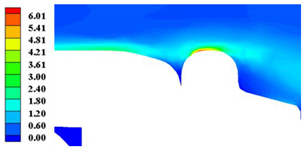 | 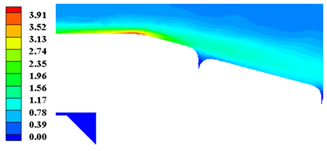 |
| 2 | 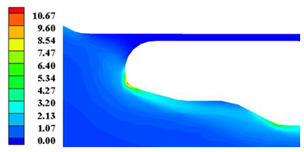 | 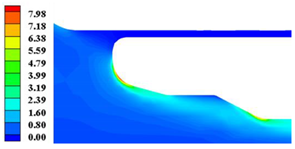 |
| 3 | 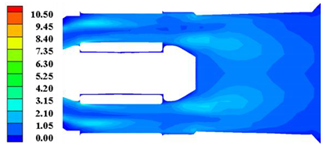 | 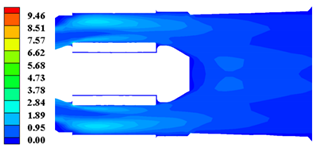 |
Publisher’s Note: MDPI stays neutral with regard to jurisdictional claims in published maps and institutional affiliations. |
© 2021 by the authors. Licensee MDPI, Basel, Switzerland. This article is an open access article distributed under the terms and conditions of the Creative Commons Attribution (CC BY) license (http://creativecommons.org/licenses/by/4.0/).
Share and Cite
Wu, Y.-T.; Qin, Z.; Eizad, A.; Lyu, S.-K. Design and Numerical Simulation-Based Optimization of a Novel Flat-Face Coupling System for Hydraulic Power Equipment. Appl. Sci. 2021, 11, 388. https://doi.org/10.3390/app11010388
Wu Y-T, Qin Z, Eizad A, Lyu S-K. Design and Numerical Simulation-Based Optimization of a Novel Flat-Face Coupling System for Hydraulic Power Equipment. Applied Sciences. 2021; 11(1):388. https://doi.org/10.3390/app11010388
Chicago/Turabian StyleWu, Yu-Ting, Zhen Qin, Amre Eizad, and Sung-Ki Lyu. 2021. "Design and Numerical Simulation-Based Optimization of a Novel Flat-Face Coupling System for Hydraulic Power Equipment" Applied Sciences 11, no. 1: 388. https://doi.org/10.3390/app11010388
APA StyleWu, Y.-T., Qin, Z., Eizad, A., & Lyu, S.-K. (2021). Design and Numerical Simulation-Based Optimization of a Novel Flat-Face Coupling System for Hydraulic Power Equipment. Applied Sciences, 11(1), 388. https://doi.org/10.3390/app11010388





